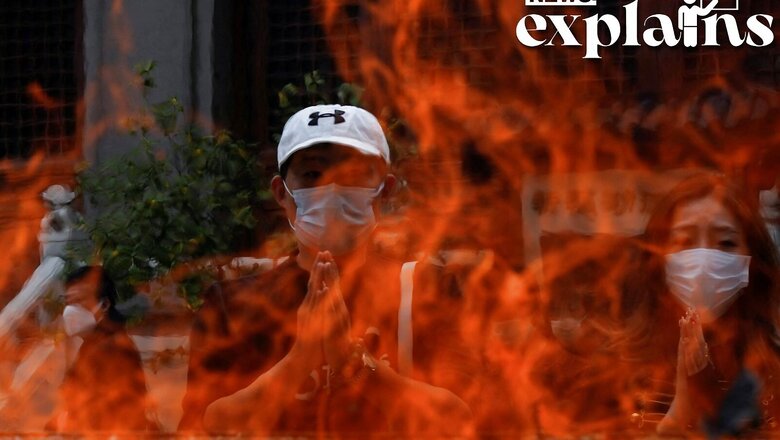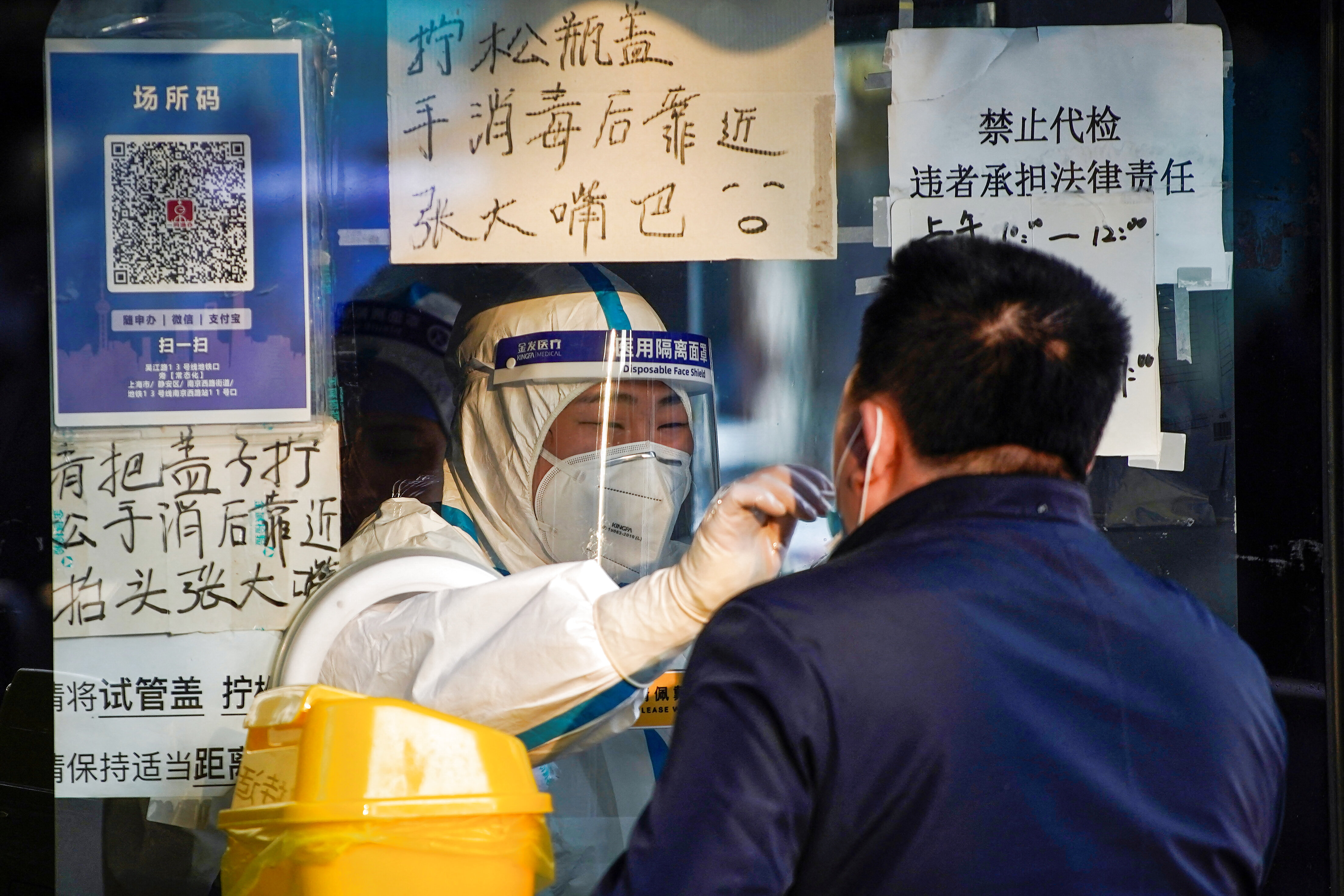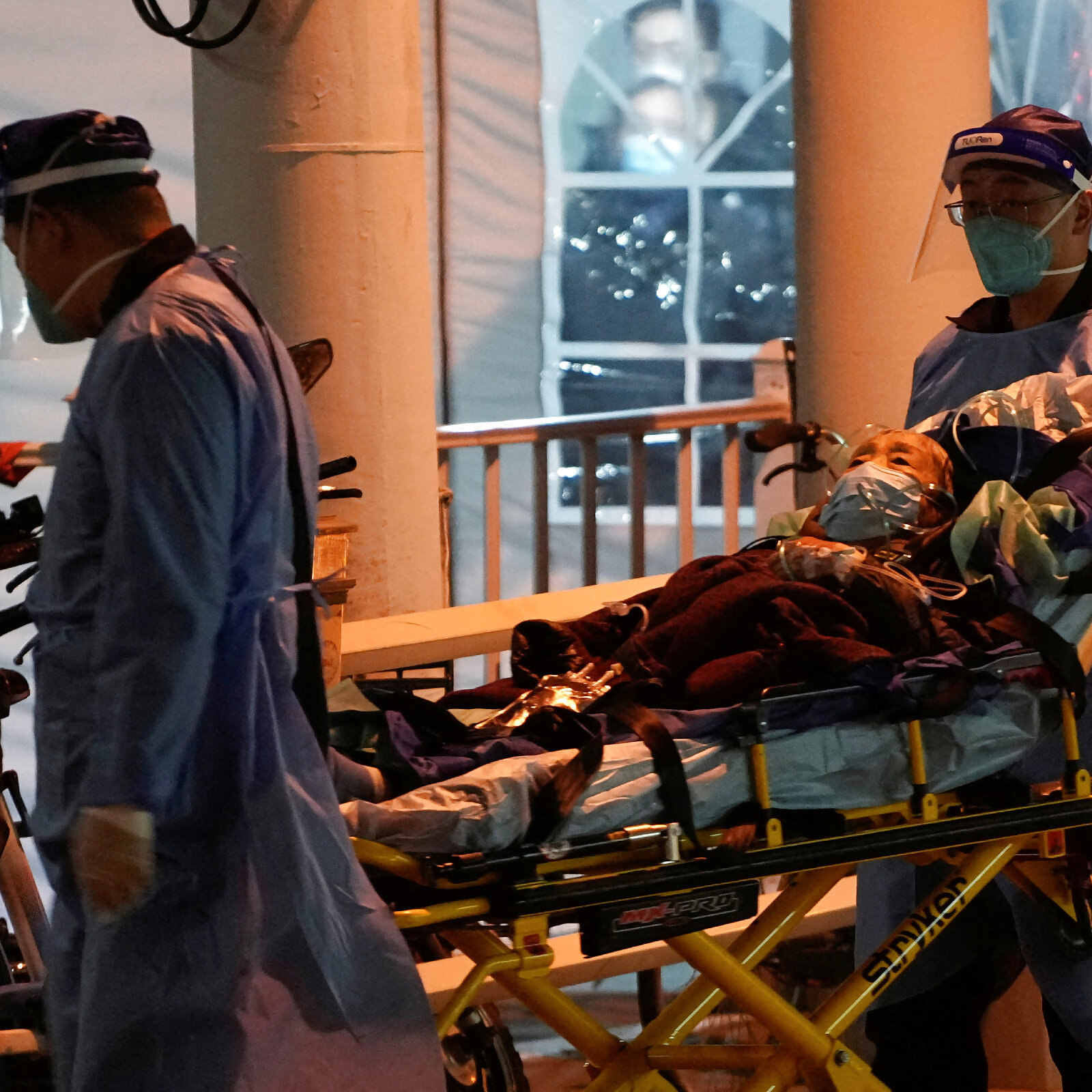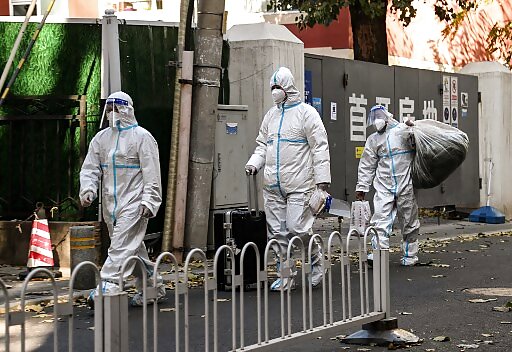
views
The case rise in China is alarming the world. And earlier, a Chinese health official said that the country is only counting deaths from pneumonia or respiratory failure in its official Covid-19 death toll, a narrow definition that limits the number of deaths reported as the virus surges following the easing of pandemic-related restrictions.
Covid-19 deaths do not include deaths in patients with pre-existing illnesses, according to Wang Guiqiang, the head of infectious disease at Peking University’s No. 1 Hospital.
China has always been conservative in its illness counting, whether it is the flu or Covid-19. Guidelines in most countries, including the United States, state that any death in which COVID-19 is a factor or contributor is a COVID-19-related death.

Wang’s comments on Tuesday effectively clarified publicly what the country has been doing throughout the pandemic.
According to a daily tally released by the National Health Commission on Wednesday, China reported no new Covid-19 deaths and deducted one death from its overall toll, bringing it down to 5,241.
But this cannot hide the fact that China looks to be struggling after letting go of its Zero Covid policy, which had initiated strict lockdowns. After a fire in the Urumqi region killed several people, protesters thronged the streets asking the government to open up.
And China did open up.
But ever since it has, there are have been reports of strained health care systems, long waits for vaccination appointments and filling up of crematoriums.
India too is taking measures to make sure the country does not see a resurgence of Covid-19 as is being seen in China and some other countries, currently.
But while precaution is the first priority, some experts have assured that India may not face such a dire situation as it had in the second wave, simply due to the fact that our vaccination coverage was better, and that the people had gone through successive waves since the pandemic began, building ‘hybrid immunity’.

But with China now opening up, experts say the country is on the path to learning to live with Covid, like the rest of the world.
What Happened in China?
China was relying on the Zero Covid approach all this while to deal with the pandemic.
In contrast to other countries, which have accepted that they will have to live with the disease to some extent, China was pursuing a policy known as “dynamic zero,” which entails taking dynamic action wherever Covid-19 flares up in order to eradicate it.
The Chinese government claimed that this policy saves lives because uncontrolled outbreaks endanger many vulnerable people, such as the elderly.
But due to this factor, a large majority of the Chinese population was never exposed to the virus like other countries, leading to low levels of immunity – because of low levels of infection so far.
After country-wide anti government and lockdown protests in China, Xi Jinping began relaxing lockdown, putting an end to Zero Covid.
However, as predicted, this has led to a spurt in infections and hospitalisations, and even reported deaths.
When it comes to China, the country’s vaccination rate is above 90%, but the rate for boostered adults drops to 57.9%, and to 42.3% for people aged 80 and above, according to government data.

In September, an article by a publication under the Chinese Center for Disease Control and Prevention (CDC) acknowledged coverage of older adults was poor, and that the absence of local doctors in vaccine drives, poor medical understanding and a lack of insurance for potential side effects all dampened enthusiasm.
“It’s a very special case in China because people felt very safe for a long time,” said Stephanie Jean-Tsang, an assistant professor at Hong Kong Baptist University who specialises in messaging around health.
Authorities have not made vaccination mandatory amid signs that the public would push back against any such move. Last week China said it would start to offer a second booster – or fourth shot – for high-risk groups and people over 60 years old.
Overseas-developed vaccines are unavailable in mainland China to the general public, which has relied on inactivated shots by Sinopharm, Sinovac’s Coronavac and other domestically developed options for its vaccine rollout and which the medical community has found to be safe. It has also yet to introduce its own version of an mRNA vaccine.
While China’s medical community in general doesn’t doubt the safety of China’s vaccines, questions remain over their efficacy compared to foreign-made mRNA counterparts, said Kelly Lei, a doctor in the southern Chinese city of Shenzhen.
In late November, the hashtag ‘Sinovac vaccine counterfeit’ surged to five million views on the Twitter-like Weibo platform, with many posts discussing lumps and hair loss allegedly caused by the locally made vaccine.
“At least a half of doctors and educated people wanted to get the mRNA ones and refused to get the Chinese ones,” Lei said.
“After a while, people see no hope and also they are kind of forced to get the Chinese ones, so they had to accept it. Some doctors talked to me, and said it’s useless anyway, why waste the money.”
Lei said many of her friends are looking to visit the neighbouring Chinese territory of Macau, where mainlanders can receive mRNA vaccines.
Demand has surged in recent weeks, visitors to Macau say, with the online booking platform for vaccination showing no bookings available until Jan. 21.
There is also the problem of vaccine hesitancy in China.

Early reluctance to get vaccinated was due to initial uncertainty about safety outcomes in older people, which stemmed in part from a lack of clinical trials assessing the outcomes of domestic vaccines in this age group.
In some cases, physicians who advised older patients with chronic conditions against vaccination shared this reluctance.
Why China Has to Learn from the World Now
Professor Devi Shridhar, chair of global public health at the University of Edinburgh, wrote for the Guardian that China’s experience reinforces what health and economic experts have long known: the trade-offs in a pandemic are not between “the economy” and “health”.
Because illness causes factory and transportation shutdowns, the spread of Covid is causing staff shortages. Last Friday, only 20% of employees arrived at work in one factory in the eastern province of Shandong (the rest were off sick due to Covid-19).
While restrictions such as sector shutdowns harm the economy, allowing the virus to spread does not mean that business can resume as usual. When people are sick and unable to work, or are too afraid to travel or eat out, the economy simply does not function as it should, she explained.
This is the true lesson of Sweden, which attempted to avoid mandatory restrictions before going into emergency lockdown in the winter of 2020. Norway, on the other hand, imposed early restrictions in March of that year. When adjusted for population size, Sweden’s death toll is 12 times that of Norway. In 2020, both countries experienced a similar economic toll.

Delaying and preventing infections in 2020, whether through robust test and tracing and border measures (as in South Korea or New Zealand) or strict mixing restrictions (as in the United Kingdom), allowed countries to buy time until life-saving scientific tools became available.
Several safe and effective vaccines were developed during Covid-19’s first year, two effective treatments were identified, and doctors established better clinical guidance to improve patients’ chances of survival.
The race to make these treatments and solutions available to everyone and reopen economies then began, Sridhar explained. Countries that acted quickly, such as South Korea, Norway, Denmark, Japan, and New Zealand, avoided the massive Covid-19 death tolls experienced by the United Kingdom, Sweden, and the United States.
China has now begun the difficult process of learning to live with Covid, she says. The disease has proven to be one of the most difficult to manage due to the way it spreads, the severity of the disease (some people have no symptoms while others die from it), and the time it has taken to develop scientific tools to reduce hospitalisations and deaths while keeping health systems operational.
Read all the Latest Explainers here




















Comments
0 comment